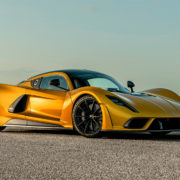Chaos – Automotive – by Spyros Panopoulos
SO, WHAT IS AN ULTRA CAR?
What if… someone told you, that there was a vehicle built with technology of the future, made with a 3D printer, using materials from aerospace technology applied for the first time in a car?
What if… What if…… What if…..

Chaos – Automotive – by Spyros Panopoulos
Words cannot describe the emotions and the adrenaline rush that this masterpiece of technology elicits in its driver. It is not just a car, it is the epitome of the future, the next step in automotive evolution, a work of art, a masterpiece.
It is the first Ultra car proudly made in Greece, the country where culture originated, and the future is born.
INTERIORS
2 built in to the monocoque Seats Carbon fiber and Zylon with Alcantara, for lower center of gravity and perfect Roll and Pitch setup (Roll = The angle between the car’s body and a longitudinal axis. Roll is caused by centrifugal forces and “uneven” track surfaces.) – (Pitch – The angle between the car’s body and a transverse axis. Pitch is caused by the car’s acceleration or deceleration. It is most noticeable under heavy braking, with the car tending to angle forward.
3D printed Anadiaplasi titanium steering wheel, 3D printed Anadiaplasi titanium pedals, 3D printed Anadiaplasi titanium rear-view mirror with 2 x built in cameras, magnesium 3D printed steering wheel column box

Zylon boor panels, zylon car dashboard with Alcantara
Billet 7 axis point milled X design billet Tennalumsuper alloy Ultra-strength – Ultimate alloy (683Mpa yield strength), has the highest mechanical strength of all commercially available aluminum alloys (2.5 times stronger than 6061, and 35% stronger than 7075) and exceeds that of many steels. In fact, its yield strength is approaching that of pre-hardened (HRC 26-32) 41XX and 400 series stainless steels but at a third of the weight. In strength-to-weight ratio, Tennalum out performs nearly all other engineering alloys in existence (33% better strength-to-weight performance than 7075, and 28% better performance than 6Al-4V Grade 5 Titanium)

Tennalum super alloy, Sinker EDM
Sinker EDM technique uses an energized shaped electrode in a submerged bath of dielectric fluid to machine conductive metals and offers an efficient manufacturing method to produce complex part details that are difficult to machine by other methods, like 5 axis machines etc. Sinker spark erosion machines are fitted with an Intelligent Speed Power Generator (ISPG) which, using patented technologies, establishes new standards in surface quality, material removal and accuracy of form. Electrode wear is reduced in all machining operations, from roughing to finishing, with copper or graphite electrodes. Productivity shows an average increase of 30 percent, and can even reach 100 percent for pre-milled forms. Even in the presence of deep, narrow cavities, with poor flushing conditions, a 50 percent increase in erosion speed can be obtained with no increase in electrode wear. It appears that the more complex the piston design is, the more high quality of surface.
Titanium 3D printed Anadiaplasi Stainless Tool Steel H13 3D printed Anadiaplasi (not recommended for this setup

AERODYNAMICS
Particular emphasis has been placed on the study and design of aerodynamics, as they are two factors on which we have relied for the construction of the entire car, making it currently the best vehicle after the F1.
At speeds over 500km on track conditions, in order to achieve the ultimate turning time, everything must be perfectly designed and we must exhaust all room for improvement.
The front spoiler gives total downforce 2.780 N and total Drag 408 N and Aerodynamic efficiency: Ci / Cd = 6,813, numbers and proportions that can be found only in F1 cars.
The floor is also innovatively designed, in order to take advantage of the Venturi effect, i.e the difference in pressure and speed of the upper part of the car with the lower one and to minimize the lifting of the car and push it to the ground with greater force in combination with the large diffuser.

The vertical fins under the floor help keep the laminar airflow (air flowing in a smooth path) out the back of the vehicle, without these vertical fins the air can become turbulent (airflow crossing directions). Laminar airflow increases efficiency as turbulent air decreases efficiency by creating drag.
As for the front surface and the way the air is transferred from the front to the back, the design helps so that the air hugs the vehicle and passes almost all through the front of the wings, around the monocoque and comes out into the back airways with a tendency to push the car to the ground. The rear air ducts have airflow Volume / 16.990m3 / HR and are capable of supplying horsepower over 3.000 horsepower.














Leave a Reply
Want to join the discussion?Feel free to contribute!